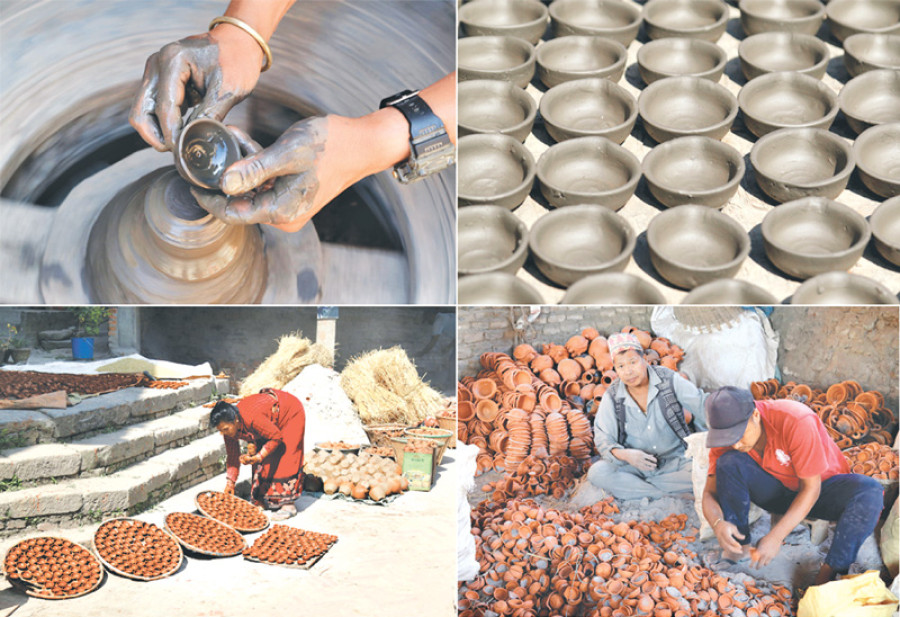Valley
Bhaktapur’s pottery makers struggling to keep trade alive
Ram Bahadur Prajapati has been making potterywares for more than six decades.
Pratichya Dulal
Ram Bahadur Prajapati has been making potterywares for more than six decades.
When he was growing up every one in his community, in Bola Che, Bhaktapur, worked as pottery makers.
But things have changed over the years. Today, pottery making is no longer the family trade for majority of the 200-odd households that live in Bola Che, also known as the Pottery Square. Most of the young generations are involved in other professions, because pottery making alone is not enough to make ends meet these days.
Ram Bahadur knows this very well.
He has accepted the professional choices made by his sons and grandson. And he takes comfort in the fact that at least his sons and grandson know how to spin a potter’s wheel and make potterywares, no matter what careers they are into.
“There are easier works with better pay check, and naturally, the new generations are attracted to those works. Even though they have taken up different professions, I am proud that my sons and grandson know how to make pottery and I hope they will one day pass it down to the next generation,” says Ram Bahadur.
Gunakeshari Prajapati, another full time pottery maker, says making potterywares is not an easy task, nor profitable.
“While the cost of living has soared, we, pottery makers, have not been able to raise the price of our goods. Earthenwares have been replaced by plastic and steel goods, people rarely buy our products,” she says.
The only time the pottery makers of Bola Che make a decent earning is the Tihar festival, when people buy ‘pala’ (a small clay receptacle used as an oil lamp).
“The other days,” Gunakeshari says, “our business mostly survives on the tip made by foreigners who try their hands at making potterywares.”




 15.69°C Kathmandu
15.69°C Kathmandu











